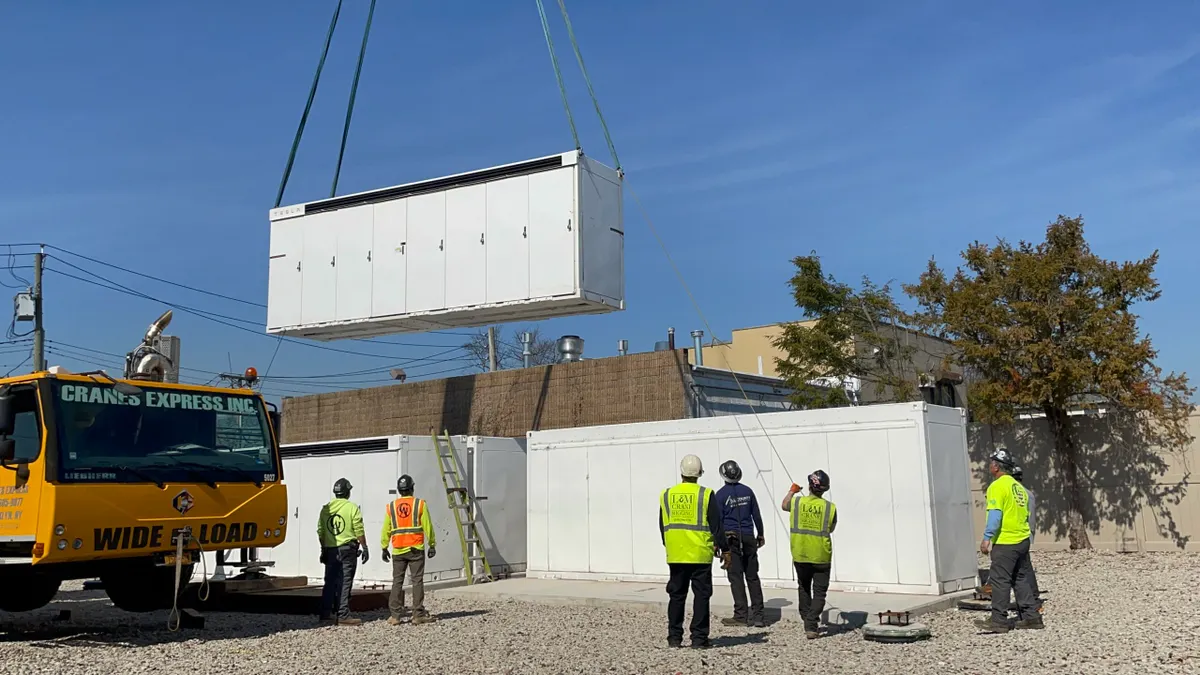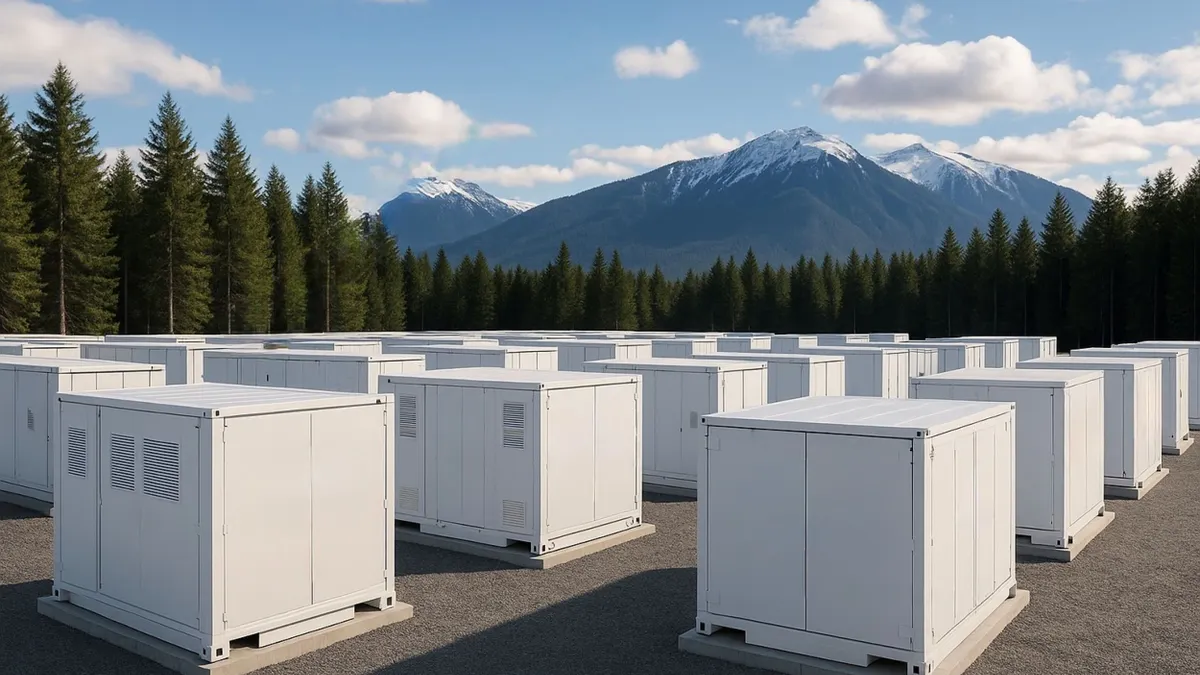As energy storage becomes more economically competitive with more traditional forms of merchant generation, access to wholesale power markets is seen as an important addition to the technology's opportunities on the contracted side. However, questions remain about the effective implementation of the federal order that seeks to create consistent opportunities for storage to compete in wholesale energy markets.
The Federal Energy Regulatory Commission (FERC) is working through conflicting stakeholder comments regarding the compliance plans filed last year by six regional transmission operators (RTOs) and independent system operators (ISOs) related to Order 841 — FERC's directive on integrating energy storage into wholesale energy markets.
While the proceeding is in its later stages and grid operators are less than a year away from their deadlines to comply with the storage order, disagreements among stakeholders remain. Certain groups, including the National Association of Regulatory Utility Commissioners (NARUC) and the National Rural Electric Cooperative Association (NRECA), have asked FERC for a rehearing on the order. NARUC said that FERC did not have the authority to direct RTOs and ISOs to whether they should include storage in the wholesale market. NRECA and a number of smaller utilities objected to the lack of regional control in the grid operators' plans.
"It's like Order 745 in some respects, people are going to continue to have that conversation" about rehearings and wholesale markets jurisdiction, Jason Burwen, policy vice president of the Energy Storage Association, told Utility Dive, referencing a FERC order on demand response in wholesale markets that eventually led to a Supreme Court ruling on the matter.
"Folks in the electric storage resource industry need to have some degree of clarity to how they're going to be treated."

Jason Burwen
VP of policy, Energy Storage Association
Response from storage developers
Industry comments and requests for intervention began to roll in as the RTOs/ISOs made their compliance filings last December.
Storage developers, such as Tesla, EDF Renewables and NextEra Energy Resources, generally praised the RTOs/ISOs that have waived transmission access charges for storage systems. In their comments, ESA said storage projects should be exempt from a system optimization fee when storage systems are charged at the specific designation of RTOs/ISOs.
"Folks in the electric storage resource industry need to have some degree of clarity to how they're going to be treated," Burwen told a crowd of regulators and industry stakeholders at a Feb. 10 session on Order 841 at the NARUC winter policy conference.
But while generally supportive of the compliance plans, storage developers also asked FERC to clarify parts of the plans that could negatively affect their potential revenue streams, or petitioned for changes on those matters. Below is a non-exhaustive list of storage developer or storage trade group complaints:
| RTO/ISO | Comments |
|---|---|
| Southwest Power Pool (SPP) |
Behind-the-meter storage rules do not allow the resources "to inject energy onto the grid or do not allow energy storage to seamlessly transition between on-site load and injecting onto the grid," Tesla said, with similar criticism of MISO, NYISO, CAISO and PJM. |
| Midcontinent Independent System Operator (MISO) |
ESA asked FERC to deny MISO's application of transmission service charges "to all charging energy at ISO instruction," which is "clearly distinct from load" for their own market economic purposes. NextEra Energy Resources and other developers echoed that request. |
| New York Independent System Operator (NYISO) |
NextEra Energy Resources opposed the lack of opportunity for storage resources to manage their own state of charge in the NYISO day-ahead capacity market, leading to a "less desirable framework." NYISO cannot prohibit dual participation in wholesale and retail programs, Tesla wrote, as it is "not only unduly discriminatory, but will cause significant harm" to regional storage development. |
| California Independent System Operator (CAISO) |
ESA identified an ambiguity for the ISO's transmission access charge exemption, and asked FERC to require a clarification. The California Energy Storage Alliance (CESA) found the transmission access charges application in compliance with Order 841. However, CESA asked for more CAISO qualifications of how to avoid double-payment for behind-the-meter storage, as "further progress is needed to improve these participation models." |
| Independent System Operator New England (ISO-NE) |
ISO-NE's choice to derate storage automatically as it unloads drew criticisms from the storage industry. "By artificially limiting storage resource dispatch, ISO-NE is creating barriers to participation instead of facilitating their participation in its market," wrote ESA. EDF Renewables also sought clarification for how storage resources will participate as behind-the-meter versus transmission-level resources; how to participate simultaneously in retail- and wholesale-level programs. The unlimited performance penalties associated with ISO-NE's two-hour runtime requirement would "create a significant barrier" for storage participation, Tesla wrote, although the company does not oppose the runtime minimum.
|
| PJM Interconnection |
Many intervenors, from ESA to Advanced Energy Economy (AEE), opposed the proposal to determine storage capacity value by a resource's ability to meet a 10-hour continuous duration requirement. By relying on characteristics typical for non-storage resources, PJM "will exclude significant capacity" from storage resources, "resulting in unjust and unreasonable rates," AEE wrote. The proposal does not address how storage resources can calculate opportunity costs in cost-based offers, which "could result in PJM inappropriately mitigating that resource to a cost-based offer that is below its true short-run marginal cost," AEE wrote. |
Wanted: Regional independence
Several stakeholders continue to see Order 841 as an overstep of federal authority.
"Our worry is just sort of the federalization of all of the policy about storage," Randy Elliott, regulatory counsel senior director at NRECA, told Utility Dive.
NRECA partnered with American Municipal Power and the American Public Power Association to request a rehearing of the order in March 2018, asking FERC to make allowances for utilities to decide whether resources participate in the RTO/ISO wholesale markets. Such efforts haven't gone away, as seen by subsequent comments filed by various utilities and regulators.
"It's great for the RTOs and for FERC to update the rules and allow storage to participate … but they need to kind of stay in their lane, and give people the option to take advantage of that in the states."

Randy Elliott
Senior director of regulatory counsel, NRECA
DTE Electric, a subsidiary of DTE Energy, submitted comments on MISO's compliance filing as a public utility, commending the operator for "balancing FERC's reach and impact over the operations of [electric distribution company's] systems and retail electricity consumers." DTE further asked that MISO establish proper communication and data requirements to ensure state and power distributor input "that can stand apart from state intervention while maintaining safe, reliable, and efficient operations."
FirstEnergy Utilities, Dayton Power and Light and East Kentucky Power Cooperative similarly determined in a joint filing that they should have a primary role to play in PJM's plan in integrating storage onto the local distribution system. PJM "ignores the potential impact" of large-scale storage integration on the distribution system, the utilities wrote.
Regulators expressed similar concerns. The New Jersey Board of Public Utilities (BPU) filed comments stating "that, over time, much of the distribution system may be relinquished to PJM jurisdictional interconnection procedures."
"It's great for the RTOs and for FERC to update the rules and allow storage to participate [in wholesale energy markets], they should do that, because they've got antiquated tariff rules and they need to update those … but they need to kind of stay in their lane, and give people the option to take advantage of that in the states," Elliott said.
Instead of creating overly broad conditions for storage through Order 841, NRECA asked for states and power distributors to lead the charge, noting that Massachusetts and other states in ISO-NE had created the necessary conditions to allow a distributed solar-plus-storage bid from Sunrun to succeed in the grid operator's forward capacity market.
"It's sort of a win-win there, but it's a cooperative effort, it's not being imposed upon National Grid by FERC," Elliott said of Sunrun's bid.
Regulators asked during the NARUC storage session about the policy and regulatory environment that led to the 20-MW bid in the area, ahead of Order 841 implementation. Massachusetts Commissioner Penny Blaisdell credited ISO-NE for its efforts and participation throughout the state's storage and distributed energy proceedings, along with the state's energy policy efforts.
Timing concerns
FERC directed grid operators to implement Order 841 by Dec. 3, 2019.
NYISO asked for an extension of the tariff implementation requirement — which it says it cannot meet before May 1, 2020 — without committing to a specific implementation date. However, some developers objected to the uncertainty of having a best-case scenario goal instead of a hard date for NYISO. NextEra Energy Resources asked FERC to "direct NYISO to expedite its efforts so that it can at least ensure it meets the new May 1, 2020 date."
Other operators are taking steps to meet the compliance date.
To ensure its storage tariff would be implemented by the December 2019 deadline, PJM also filed a smaller accounting proposal as part of the Order 841 proceeding, with a Jan. 4 comment deadline, and received FERC approval on Feb. 1. The RTO had asked FERC to rule on its second and larger filing by May 30.
The earlier deadline, close to end-of-year holidays, created a barrier for stakeholders seeking to respond, according to Mike Jacobs, senior energy analyst from the Union of Concerned Scientists.
"My concern is that there are greater implications to that decision than all of us have seen and discussed," Jacobs told Utility Dive.
FERC's approval notes that "any concerns regarding PJM's metering and accounting practices" will be addressed in its larger filing.
"Earlier approval of the accounting proposal will allow PJM to test its proposed metering and accounting practices, gaining real-world experience in identifying and addressing challenges, before implementing the new [energy storage resource] participation model," Jeff Shields, PJM spokesperson, told Utility Dive via email.
FERC is currently reviewing the other RTO/ISO compliance filings and associated comments, according to Craig Cano, the Commission's spokesperson. FERC has not issued a deadline for responding.
CORRECTION: A previous version of the article misstated Tesla's position on ISO-NE's two-hour runtime minimum. The company opposes the unlimited performance penalties associated with the two-hour minimum.






















